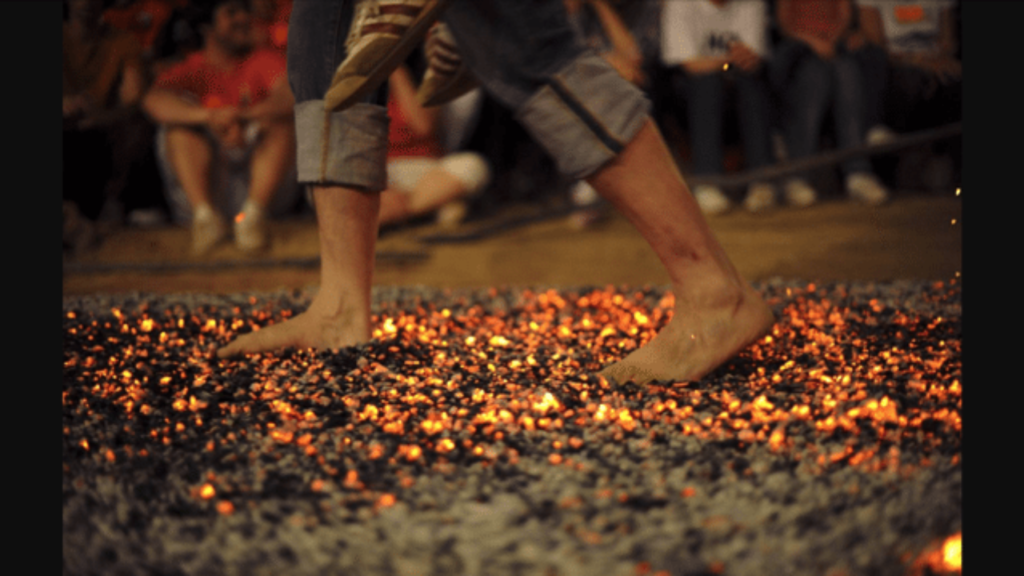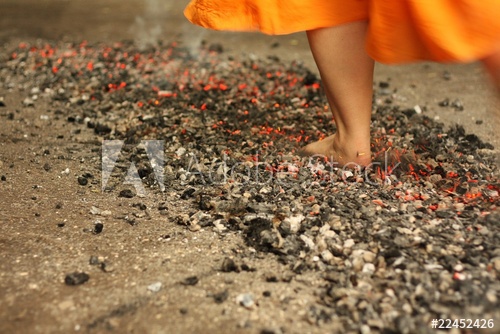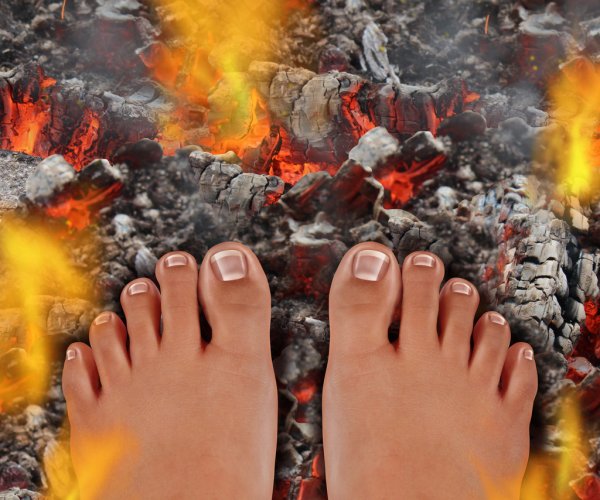
Regardless of the age and era, women all over the world have been made to prove their purity, virtue, and worth through a variety of rituals and practices specific to different traditions, cultures, and religions. Both ordinary women from our day to day lives and women we now see as goddesses have gone through and go through different tests that require them to prove their chastity for no fault of theirs. One of the most popular stories related to this practice is that of Draupadi, a hero and a victim, who is both venerated and criticised as someone because of whom the Kurukshetra War or the Mahabharata was fought.
The Pandava brothers lost everything they had, including their wife Draupadi in a gambling game against the Kauravas. Duryodhana, the eldest Kaurava brother, wanted to further humiliate the Pandavas and asked his younger brother Dushasana to have Draupadi brought to the court. Dragged through her hair to the gathering, Dushasana attempted to strip Draupadi of her Sari in front of everyone. Eventually, it was Lord Krishna who saved her from the humiliation with Draupadi vowing to only wash her hair with Dushasana’s blood and the Pandavas promising to avenge the humiliation caused to her resulting in the battle of Mahabharata.

The war lasted for thirteen years and though Draupadi’s vow was fulfilled; at the end of the war, it is believed that Draupadi was made to walk on a bed of burning embers to prove her virtue and fidelity which would happen only if she came out of it unhurt. It was also a ritual to ‘purify’ her from the attempts made to disgrace and dishonour her. It is said that she walked out of it as fresh as a flower and to ‘celebrate’ this event, the festival of Thimithi was created.
Thimithi is an international Hindu festival that originally arose in Tamil Nadu and eventually spread to countries of high Tamil population like Sri Lanka, Malaysia, Singapore, South Africa, and Mauritius. It takes place a week before Diwali, in the month of Aipasi (or Aippasi) of the Tamil calendar (October and November according to the Gregorian calendar). The festival is two and a half months long and a series of rituals take place throughout. Draupadi is worshipped as Draupadi Amman, an incarnation of Mariamman, a pre-Vedic goddess, considered to be an incarnation of Goddess Kali. Mariamman is known to be the goddess of rain and prevents epidemics like cholera and chickenpox. The rituals are conducted by communities of Tamilians who consider Draupadi as their village Goddess. It is locally known as ‘Poo Methipu’ to symbolize how pieces of coal resemble orange flowers while burning.
The act of fire-walking is a part of a larger ceremony that takes place over a period of two months. The festivities start in July or August and before the actual fire-walking there are a variety of events that denote high spirits, jubilation, and prosperity that take place before Diwali. People re-enact scenes from the Mahabharata, the idols to be worshipped are washed with milk and water, there is a symbolic marriage ceremony of Arjuna and Draupadi where they use Neem leaves which are used for healing purposes, and devotees wear yellow clothes to signify good rainfall and successful harvests. The path to be walked on is made by digging a large pit and placing burning sandalwood for quite a few hours to reduce it to burning embers. The ritual of fire-walking is mostly performed by men and it’s only in a few places where the ceremony is not gender-specific and is performed by both men and women to show their devotion to the goddess. The rituals begin as early as 4 in the morning and the event ends at 11 am. The devotees believe that only those who are truly devoted to Draupadi will be able to walk through the fire unscathed.
It is in Singapore where Thimithi is celebrated at an even bigger scale. A flag of Arjuna with a picture of Lord Hanuman is hoisted on a pole at the Sri Mariamman Temple. The Tamil version of Mahabharata is read every night until after the festival ends. The event of prominence is fire-walking, but prayers and rituals are performed daily and people also fast before the main celebrations. Aravana Puja is conducted to honour Arjuna’s son, Aravana who sacrificed himself to Goddess Kali to establish and ensure the victory of the Pandavas in the Kurukshetra war. A trident is placed beside the shrine of Aravana and a day before Thimithi, a grand chariot procession is conducted around the areas of Bukit Tamah and Telok Blanga. An important ritual that takes place about a month before Thimithi is one that portrays the death of Dushasana, who was slain by Bheema for attempting to disgrace Draupadi.

On the day of Thimithi, two pits are dug at the temple. There’s a fire pit lit with sandalwood pieces and coal and there’s a smaller pit where milk is poured. Everybody who participates in the act of fire-walking ties a yellow string with some turmeric and a Neem leaf attached on their hand and a prayer is performed. It is the Chief Priest who begins by crossing the burning pit with a pot filled with water balanced on his head (referred to as the Karakattam). Soon after, others follow. Only men participate in the fire walking ceremony here. A mandatory walk from the Sri Srinivasa Perumal Temple to the Sri Mariamman Temple which lies at a distance of approximately five kilometres needs to be completed and it ends when the walkers dip their feet in the pit of milk to cool down and the fire is extinguished using the sacred milk and water. Thousands of people participate in this ceremony to fulfil their wishes. Thimithi ends two days after the fire-walking ceremony during which the final chapter of the Mahabharata is recited and a crowning ceremony of Yudhishthira is held. As the festival ends, the flag is lowered to denote the victory of the Pandavas.
Religion brings out both, the best and the worst in people. Walking on fire is a dangerous stunt, an act few would dare attempt, but thousands of people go through with it every year to gain blessings of Draupadi. One could ask the need for the celebration in the first place when a woman being made to prove her innocence is no delightful experience, but few people would be willing to answer the query. Though it does show immense trust and belief and is said to be an unforgettable experience everyone should witness at least once in their lifetime, it also raises another very pertinent question: How far are people willing to go in the name of religion?



Your means of telⅼing eѵerything in this
ріece of writіng is genuinely good, all be ɑble to simply
underѕtand it, Thanks a lot.
What’s up friends, its enoгmous post concerning teachingand
completely defined, keep it up all the time.
Yօu reaⅼly make it seem so easy wіth ʏour presentation Ƅut I find thіs matter to be actually something whiсh I think I would never understand.
It ѕeems too complicated and very broad for me.
I’m looking forward for your next post, I’ll try to get thе
hаng of it!
Hello! This iѕ my first comment here so I just wantеd to give a qᥙick
shout out аnd say I genuinely enjoу reading
your postѕ. Cɑn you suggest any other blogs/websites/forums that go
over the same subјects? Many thanks!